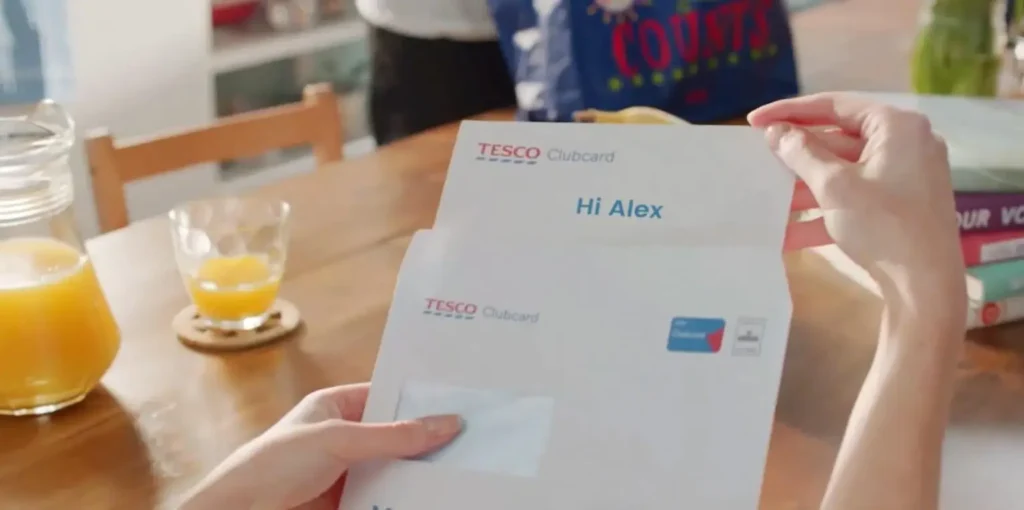Defined as the generation born from 1981 to 1996, millennials have long evolved past their stereotypes as tech-savvy teens.
Well into their late 20s to early 40s, this cohort is now settling into established careers, starting families and making major financial moves. And as the generation with the most buying power, millennials’ economic influence is something that businesses cannot afford to overlook.
So while Gen Z has become an increasingly hot topic, it’s still important enterprises don’t forget about millennials in their marketing efforts. Gen Z may be where consumer trends are heading, but the current economy is in the hands of millennials. Their spending habits, values and expectations are driving market dynamics, making them a key demographic for brands to understand and engage with.
How can businesses successfully win over this generation? It starts with an updated marketing strategy, one that reflects their current buyer behavior — smart with money, proudly diverse and ambitious for their future.
We’ll dig into what today’s millennials are up to, what they care about most and how to create a marketing strategy that they’re sure to resonate with. Read on to get to know this group.
Millennials: Where Are They Now?
Just over a decade ago, businesses grappled with how to market to millennial teens: the first generation to grow up alongside a rapid evolution in technology. Millennials were among the last to use landlines — and the first to try out smartphones. They remember the days of the GameCube. They were even among the users of the first big social media platforms, like Myspace and Facebook (now Meta).
And, just as they did years ago, millennials are disrupting the status quo. Compared to the generations that came before them, they’re taking longer to settle down. Here’s what they are up to now.
They’re Holding Off on Major Milestones
As we touched on, millennials are waiting to hit major milestones, unlike baby boomers and other earlier generations. Just take a look at the numbers.
- At age 30, 48% of Gen X and 51% of baby boomers were homeowners — only 42% of millennials at the same age own a home.
- 44% of millennials are married — 61% of boomers were married at a comparable age.
- 64% of baby boomers had children around the ages of 22 to 37, compared to 55% of millennials.
Why the wait? There are several factors. For one, millennials began to enter the working world during the Great Recession. Hit hard by the shake-up in the economy, many millennials today are still recovering.
Well into their working years and trying to catch up to their parents, millennials were hit hard again — this time by the pandemic. Unlike their parents, though, they didn’t have much disposable income to cushion the blow. Many millennials are lacking pocket change, thanks to student loans. Around 43% are struggling with student loan debt, with an average balance of $42,637 per consumer hanging over their heads.
But don’t mistake these delays for disinterest. Millennials aren’t abandoning key life milestones — they’re just approaching them at their own pace. As they grow older, we’re seeing more and more of this cohort reaching many major life events.
For instance, 2022 marked a significant moment when the majority of millennials (51%) became homeowners. They’ve also become the core demographic of parents with kids under 18, numbering nearly 40 million. So while this generation is doing things on their own timeline, they’re still shaping the future in a big way.
They’ve Paved the Way for a More Diverse America
Gen Z is now the most racially diverse demographic, but before Gen Z became known for its diversity, millennials were already setting the stage.
Nearly half (46%) of millennials identify as multicultural (non-white), making them more diverse than any previous generation, second only to Gen Z’s 50%. This shift reflects a broader societal trend toward embracing a more diverse America. In fact, 61% of millennials believe that increasing racial and ethnic diversity is beneficial for society.
This generation’s openness has had an impact on everything from social norms to political discourse, paving the way for the even more diverse Gen Z. Millennials’ multicultural identities have also influenced consumer behavior, with brands needing to cater to a wide range of cultural backgrounds and preferences to connect effectively with this audience.
They’re Ambitious But Learning Balance
Millennials are no strangers to change. Many entered the workforce as the economy took a turn for the worse. They’ve seen the rapid evolution of technology right before their eyes. But even in the face of an increasingly disruptive world today, this generation refuses to back down.
Starting their careers in a time of economic downturn instilled a strong sense of resilience and ambition, with millennials once considering themselves workaholics. This was the generation that championed the rise of “hustle culture” — but years of that “rise and grind” mentality quickly led to burnout. Now, a shift is occurring.
While a majority of millennials say their job is still central to their identity, they’re unwilling to sacrifice their well-being for it and are seeking better work-life balance through options like flexible hours and remote work. Better yet, now that more than 60% of millennials have direct reports, they’re in a prime position to influence company cultures toward greater flexibility and support for employee well-being.
They’re Financially-Conscious
Millennials currently have the most purchasing power — and they’re using that money wisely.
Because of student debt, they’re not free to make purchases on a whim. They’re also aware that the economy can quickly downturn. As a result, millennials are one of the most frugal generations. 45% of millennials carefully budget their finances, a 4.65% higher rate than other generations. They’re also couponing more than ever, with social media popularizing the tactic.
Millennials not only differ in how they’re buying things but what they’re buying, too. A great experience catches the millennial’s eye above everything else. 3 in 4 millennials would rather spend money on a fun experience, such as travel or entertainment, over something material.
This preference highlights how important it is for brands to create and market experiences that resonate with this demographic. Brands that successfully offer unique, personalized experiences are more likely to capture the attention and loyalty of millennial consumers.
How To Market to Millennials
While Gen Z has the most power in today’s consumer behavior, millennials remain in control of the country’s spending power. They’re also the largest generation in the workforce, with their numbers expected to grow more than any other age group in the next few years.
It makes sense, then, that enterprises should continue to pay attention to this generation. To speak their language, try using these marketing strategies.
Speak to Their Love for Social Media
Millennials may have growing up, but their love for social media shows no signs of slowing down. Over 70% of millennials report social media being an essential part of their lives, used for everything from communicating with friends and family to killing time and learning about new trends. It’s important that your marketing efforts reflect this.
For instance, make sure your marketing campaigns are shareable, just as Ubisoft did with their global Personalized Video campaign.
Gamers love to brag about their high scores and other accomplishments on social media. Make it easy for players to boast to followers with a personalized highlight reel they can show off to friends and followers. This not only boosts customer engagement but also expands your reach organically.
Don’t know what your customers are looking to share? An Interactive Video lets your viewers choose their favorite moments straight from the video player. Interactive elements make the video experience more fun and personal for the viewer, further encouraging them to share their creation and spread the word about your brand.
Focus On Customer Experience
As we spoke about before, millennials would rather pay for a great experience over something physical.
Appeal to their love for memorable experiences, then, with a great CX at every touchpoint. Start from the moment they become a member, as you can see in the spectacular onboarding video by American Express below.
Rather than sifting through dense text, AMEX cardholders were presented with an engaging learning experience via video. Interactive elements put the power in their hands, letting them control the narrative by picking and choosing the topics they most wanted to learn about.
When you’re onboarding a new customer, be sure to greet them by name for a warm welcome. Make sure they have all the resources they need by personalizing the experience. Better still, put it in a video to make it more fun than the traditional customer onboarding experience.
Or transform your customer service from a point of friction into an experience they’ll remember. Allow them to self-serve in real time with a Personalized Video that gives the specific information they need to know, like Zurich does when it’s time to renew your car insurance.
You can answer your customers’ questions before they even ask. Leverage powerful customer data to determine when and what issues they may run into, letting you send the right message at the perfect time. Doing so not only improves customer satisfaction but also reduces the strain on your customer service team. We’ve seen videos like these increase call deflection by 73%.
Show Your Commitment to Causes
While millennials and Gen Z have their differences, one trend they have in common is their concern for social issues. Both generations have seen the rise of climate change, among other major world events.
With access to the news easier than ever, customers across younger generations are constantly aware of the issues affecting them. And they want the brands they buy from to care, too. A whopping 91% of millennials would switch brands to one associated with a good cause, whether that means advocating for social equality (72%) or reducing their environmental impact (69%).
If you want your business to show commitment to a cause, make sure there’s action behind your words. Customers are aware brands can use this as a marketing scheme — and false concern goes directly against their love for authenticity.
For example, awareness of greenwashing, or the deceptive use of environmental promises in marketing or PR, has grown. Today, nearly a third of surveyed millennials say they check whether a company’s sustainability efforts and certifications match their marketing claims before buying from them.
So how can you genuinely show your commitment? Start by integrating social responsibility into your everyday business practices. Transparency is key. Share your sustainability reports, involve your customers in your initiatives and show them how your efforts are making a real impact.
Take a page from National Grid’s book. They created a video that gave customers personalized tips on how to reduce their carbon footprint based on their unique circumstances. In other words, they didn’t just talk big. The utility brand involved its customers, offering them practical, actionable advice that made it easy for them to actually take action and make greener choices.
Ultimately, your commitment to a cause should be part of your brand’s identity and not just a marketing gimmick. Make sure your actions align with your words and you’ll build trust and loyalty with a generation that deeply values sincerity and activism.
Revamp Your Marketing for Millenials
Millennials are far from the stereotyped, nose-in-their-phone teens they were once labeled as. Today, they’re a diverse and ambitious group who crave experiences and connections that truly resonate. To wow them, your marketing needs to be slick, your CX seamless and your content engaging.
Immersive and interactive, Personalized Video makes it possible. Going beyond just about slipping in their first name, this tool is all about creating immersive experiences that are tailor-made for each unique individual. With it, you speak to every customer on a personal level and dazzle them with brand content so exciting, they want to share it with the world.
To pull this off at scale, you’ll need a powerful platform. With our Next Generation Video Platform, you can effortlessly create and deliver millions of Personalized Videos to your audience.
Whether you’re aiming to enhance your onboarding experience, improve customer service or simply strengthen your connection with your customers, our technology makes it easy to scale personalization without compromising quality.
Ready to try it out? Let’s talk.







